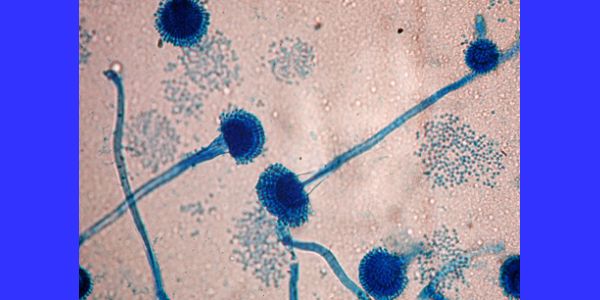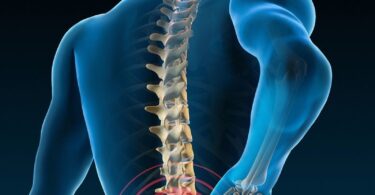A lady, 31 years old, married and mother of a two year old child, I’ll call her Priya, was referred to me for homoeopathic treatment by a neurosurgeon, on 25/8/2012.
She had gone for an eye checkup and found that she had completely lost eyesight in her left eye. On CT scan it was found that she had a pituitary gland tumour. The tumour was operated on, but she developed meningitis. She underwent lumbar puncture 10 times on various occasions, in an effort to treat the infection of these linings on the brain, and spinal cord. She had taken numerous cycles of antibiotics and now, the CT scan and lumbar puncture showed that she had ‘spinal aspergillosis’ – infection with the fungus Aspergillus Fumigatus.
This is an opportunist infection developed due to prolonged use of antibiotics, and could be hospital acquired. There were multiple lesions between the vertebrae D12 and L1. She was on steroids and anti fungal drugs. Steroids, because the inflammatory process causes exudations that can compress the spinal cord. She spent about 6 months at the hospital for all these procedures.
In spite of all this, she had severe low back pain. She had a low grade fever, ranging from 99 F to 101 F daily every evening since about 2 weeks. She felt very exhausted. She had urticaria with hives appearing on various parts of her body, with itching during the fever.
She was better by cold applications. She was constipated, had lost a lot of hair, and had blue blotches on her skin. The blue blotches, were attributable to the steroids.
She became very sensitive, cries for everything. Her vision in the left eye is lost partially. I noticed that she was speaking with almost no expression, even as she said she cries for everything! This was a striking and important indicator of the syphilitic miasm that also affects the nerves.
After studying her case, I decided to give her Tuberculinum 1M followed by Arnica 1M, and Hypericum 1M. Tuberculinum, because recurrent fever, exhaustion and a chronic destructive, inflammatory process calls for it. Arnica and Hypericum relate to the problems due to injuries and in her case, it was surgery of the spinal cord.
A week later she said, her fever was gone, and backache reduced greatly. She felt her energy getting better. I followed her up closely, seeing her every other week. One day she complained of numbness in her limbs. She walked with a wobble. The CT scan shows compression of the spinal cord due to the exudations of the healing process. As there is no natural exit to these, decompression with one more lumbar puncture had to be done. She recovered well from this.
The healing of fungal infection left scar tissue on the cord, compromising its function. This meant difficulty in walking. Her knees buckled when she tried to stand.
Now I started her on Picric acid 200 1 dose a day. This medicine relates to degeneration of the spinal cord, neurasthenia, and resulting muscular debility. I also advised physiotherapy.
She could stand after a week. Mentally she felt depressed, and believes she won’t be able to walk. She has a child of 2 years and can’t carry him. It breaks her heart.
Now Acid Phos 200, a single dose daily.
A week later she could walk a few steps. The lost sensations in her limbs are improving. Every week she improved steadily, and got the medicines her state called for. Picric Acid intermittently, at times Acid Phos, and intermittently, the Biochemic medicines in 6X as she required. Many times Ferrum phos, Kali muriaticum 6x given one after the other. If you read Schussler’s twelve tissue salts, you find these indicated in the primary and secondary inflammatory processes. I found them very useful to help her spinal cord to recover faster.
She showed me her progress sometimes in person, sometimes by video
sharing, and how she started her 2 step walk, then walked from one room to another. She progressed to climbing up stairs, then down the stairs, then walked with a walker in the garden, then without a walker. Eight months later she came to see me in person, a haversack on her back, walking independently, her face beaming with joy and gratitude.
How often has Homoeopathy stabilized a life and family about to be crippled. This time it happened because a neurosurgeon understood the limitations of his system of treatment, and the immense possibilities in Homeopathy. Skeptics fail to see things in the full perspective. May they’ll blessed with a 360 degrees vision!






DEAR DR,
YOU HAVE HANDLED THE CASE VERY WISLY VERY SYSTEMATICALLY AND ACHIEVED A SUCCESS IN A VERY DETEORATED CASE WITHOUT SPENDING TIME IN TAKING LONG CASE HISTORY. SUCH SUCCESS GIVES GREAT FAITH IN HOMEOPATHY.
THANKS
DR C S GUPTA
Thanks a lot Dr. Gupta!